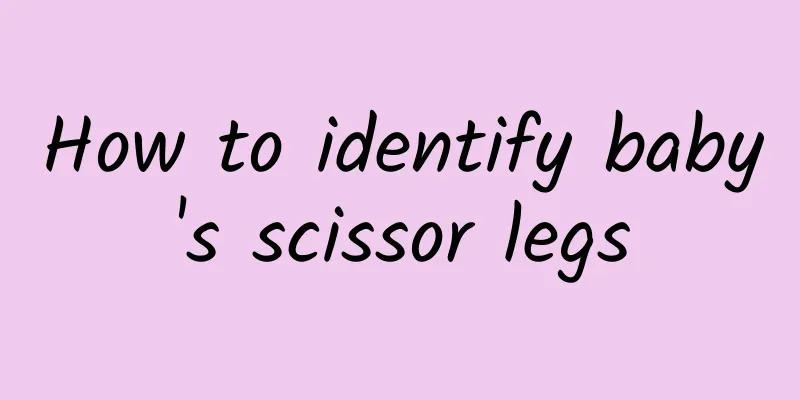Is congenital polycystic kidney disease serious?

|
Congenital polycystic kidney disease is a congenital disease that may be caused by genetics. Congenital polycystic kidney disease is a type of kidney disease. This disease will not have a great impact on the human body in the early stages. It may cause frequent urination, urgency, and inability to urinate. However, as time goes by, the condition will worsen and cause cysts to form in the kidneys, leading to kidney failure. So is this disease serious? Let me introduce it to you below. Patients with congenital polycystic kidney disease are generally divided into two types. One is the infantile type, which is caused by chromosomal recessive inheritance. Patients with infantile congenital polycystic kidney disease often have other congenital malformations, develop the disease after birth, and often die within a few months. The other is the adult type, which is caused by chromosomal dominant inheritance. Adult congenital polycystic kidney disease patients often have polycystic lesions in the liver, spleen, pancreas, ovaries, bones and other organs and tissues, as well as intracranial aneurysms, etc., and the disease usually begins in middle age. As we all know, the development of any disease has a process of priority, and congenital polycystic kidney disease is no exception. The kidneys have a strong compensatory function, so when they are initially disturbed by external factors such as cysts or some inflammations, the symptoms are often not very obvious and will not have a major impact on life, work, and study. Due to the symptoms of congenital polycystic kidney disease, many patients fail to pay timely attention, thus delaying early diagnosis and treatment. However, patients with congenital polycystic kidney disease do not always have no symptoms. Clinically, patients with congenital polycystic kidney disease generally begin to develop the disease at the age of 30. The first symptoms include high blood pressure, hematuria, abdominal pain, etc., and sometimes urinary tract infections or kidney stones may also occur. In congenital polycystic kidney disease, the entire kidney may be filled with cysts of various sizes, and these cysts will gradually grow larger with age. Over the years, the kidneys increase in size, the renal parenchyma is compressed, the kidneys atrophy, kidney function is damaged, the number of renal units that can produce urine is greatly reduced, and the kidneys slowly lose their function of maintaining normal life functions, eventually leading to chronic renal failure and uremia. Experts believe that 50% of patients with congenital polycystic kidney disease over the age of 60 may enter the stage of end-stage renal failure. treat The conservative methods currently used in clinical practice to treat congenital polycystic kidney disease mainly refer to oral medications and acupuncture. For the oral medication treatment of congenital renal cysts, you can also take 20 grams of Alisma, 12 grams of Atractylodes, 12 grams of Poria, 12 grams of peeled Poria, and 8 grams of peeled cinnamon twig every day. Put all the above medicinal materials in a pot, simmer until boiling and then drink. For the treatment of congenital renal cysts by acupuncture, several acupoints can be selected, such as Tanzhong, Jiuwei, Zhongwan, Jianshu, Qihai, Fuliu, and Sanyinjiao. Either tonifying or draining techniques can be used, and the needles should be retained for 20-30 minutes each time. For the treatment of congenital renal cysts, acupuncture can be used on several selected acupoints such as the Liver Shu, Spleen Shu, Kidney Shu, Zhibao, Feiyang, and Taixi points, using either tonifying or draining techniques, with the needles retained for 20-30 minutes each time. |
<<: The drug of choice for anxiety disorders
>>: What is polycystic kidney disease?
Recommend
A good man is covered in hair and a good woman is covered in fat. Don't get carried away.
As the saying goes, "A good man is covered i...
What to do if eczema appears on the eyelids
The treatment for eczema on the eyelids is simila...
The efficacy and function of bitter orange flower
Bitter orange blossom has a bitter and medicinal ...
How to tighten loose teeth
If our permanent teeth fall out, they will not gr...
What to do if your baby has tooth decay? Six ways to say goodbye to tooth decay
Children are prone to tooth decay because they lo...
What tea can I drink to treat acne?
From the surface, acne is caused by blockage of s...
Can I eat Tremella fuciformis and lotus seeds when I have a cold?
When you have a cold, it is beneficial to eat som...
How to eat coix seed to inhibit tumor
Many people often have the habit of eating corn i...
What should I pay attention to when taking Chinese medicine to treat acne?
It is normal to have acne on the body. This situa...
Can pregnant women eat spinach?
Expectant mothers during pregnancy should pay spe...
Seven month old baby has developmental delay
Many people say that children change every day an...
Is uterine cold difficult to conceive?
Many women have the problem of cold uterus. As th...
Chinese medicine for skin
There are many types of skin diseases. Some are c...
What to do if the glucose tolerance is high for two hours
For pregnant women, whether the glucose tolerance ...
Exercises for lumbar protrusion and leg numbness
Lying down while having a herniated disc often le...









